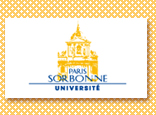|
Good afternoon, everybody. Today, I will present a subject about icon and index in information and communication technology. Therefore, I have divided this topic into 4 items.
- Theory of index
- Theory of icon
- Icon & index, important tools for navigation
- Practical information
Before going straigtht to the topic, I would like to introduce to you Peirce's theory of semiotics(semiotics is the study of signs). Then, I will communicate to you the theories of both icon & index respectively. Thirdly, I will present their important roles in navigation, and at last I will give you some practical information, such as tools used for creating these functions and website where you can download some icons for your personal use.
Charles Sanders Peirce (1839 - 1914)
- American philosopher, physicist and founder of semiotics in 19th century.
- His semiotics model: a sign is a triadic relation between a signifier, a referent and the signified.
- He divides signs into 3 categories: icon, index and symbol.
Why it is important to mention Peirce's theory? Because his philosophical pragmatism on semiotics - Peirce's signs, provides a common language for knowledge. Signs are a universal language and we use signs in any kind of communication. For instance, two persons of different nationality can communicate between them by signs, though they speak the different language. In publicity, publicists also use signs to diffuse information to the public. In otherr words, signs are an effecient tool for communicating knowlege. A website is a sort of knowlege representation where signs acting as an intermediary, help humans to communicate with computers and it is also a kind of metaphor.
Therefore, we have to understand the meaning of a sign. According to Jean-Marc Orliaguet, professor of Chalmers University of Technology in Sweden, in his paper: From UNIX to the desktop: a semiotic perspective on digital (r)evolution, he said, "in Peirce's semiotics model, a sign is a triadic relation between a signifier, a referent and the signified".
A signifier, in fact it's a representaman (the sign vehicle, the form which the sign takes) ex: a menu, an icon... A referent is an immediate object. That is the concept, the action performed, what the sign stands for... A signified is an interpretant. In another word, how the sign is interpreted in a given context, the sense made of the sign.
Now, I will give you an explicit idea on these three notions.
Picture the paper bin icon on your computer desktop. Firstly, we see a picture, an image or an icon. That's what we call signifier. Secondly, based on our past experience, a concept comes immediately to our mind. This picture symbolises a paper bin. This is called a referent. Thirdly, also based on our past experience, we think perhaps this picture symbolizing a paper bin applied in computer instead of house-hold paper bin. As no explicit context, we can't tell what it representst exactly. This is called signified.
- signifier : an icon, an image
- referent: it is a paper bin
- signified: a house-hold paper bin or a paper bin in computer where we throw our files.
Clarifying the meaning of these three notions, now I come back to talk about the notion of icon, index & symbol, three categories of a sign,derived from three mode relations from the signifier & the referent, according to Peirce's term.
The icon is a mode where the signifier is indirectly linked to the referent by a resemblance, a similarity in appearance or quality.
Here again, always according to Professor Orliaguet on peircean terms.
The icon .... Quality. He gives an example: A folder (the signifer) is an iconic representation of a file directory (the referent) based on similar functional qualities. He indicates, here, icon reveals a sense of continuity between the signifier & its referent.
The index is a mode where the signifier is directly connected to the referent, either causally or physically.
The index.....physically. For example, a flashing red light indicating that sth is wrong (The flashing red light itself is a signifier.Sth is wrong is its referent). Based on this, prof. Orliaguet concludes that indexical signs are the expression of a contiguity btw a signifier & its referent since they are physically & temporally dependent on each other.
Professor Orliaguet also indicates that icon, by contrast with index, the connection requires a leap of the imagination, there is no contiguity in iconic representations.
The symbol is a mode where the signifier is connected to the referent by arbitary rules, chosen by pure convention & usage.
The last category of signs is symbol.
In fact, symbols exist for themselves, free from any sort of motivation & necessity
as present in icons & indices. Before moving to next item, for those
who want to learn more about Peirce, you are invited to visit the
Biography
and Edition Project website.
In this site, you can find the biography of Peirce and the Peirce Edition Project by Purdue University Indianapolis. In fact, much of Peirce's work exists only in manuscript form.
|



